Facing a mandatory shelter-in-place ordinance to limit the spread of COVID-19, PG enacted a hybrid approach to filming and producing Rig Rundowns. This is the 45th video in that format.
Do you love guitars, comedy, and peruse Instagram? Then take a break from PG to make sure you follow Rigs of Dad. (You can thank us in the comment section.) While you might think Ross Hurt, the man behind the spit-take spoofery hosted on Rigs of Dad, is the Weird Al of guitardom, rest assured, the axe is mightier than the sword (or in his case, keyboard).
The multi-dimensional Burial Waves is a D.C./Baltimore quintet created by longtime friends and touring mates. Singer Kyle Durfey (Pianos Become the Teeth), guitarists Ross Hurt (Black Clouds) and Matthew Dowling (Deleted Scenes, The Effects), bassist Kevin Hilliard (Flavor Waster, Caverns), and drummer Jimmy Rhodes (Black Clouds) blend their pedigrees to create a washy, spacy rock that ventures into realms of helium-grade post-rock and thunderous, amp-worshiping metal.
Just before putting out another new Burial Waves song, the Rigs-of-Dad guitar hero virtually welcomed PG’s Chris Kies into his D.C.-based art venue and practice space.
In this episode, Burial Waves sound architect Ross Hurt walks us through two solid guitar setups and a monstrous bass rig created by his personal collection of gear. He introduces us to a pair of custom Dunables and a couple revamped sig Jazzmasters, he explains the use (and signal flow) for a complex solid-state stereo rig, and we witness how a pedal problem proves beneficial when build post-rock boards.

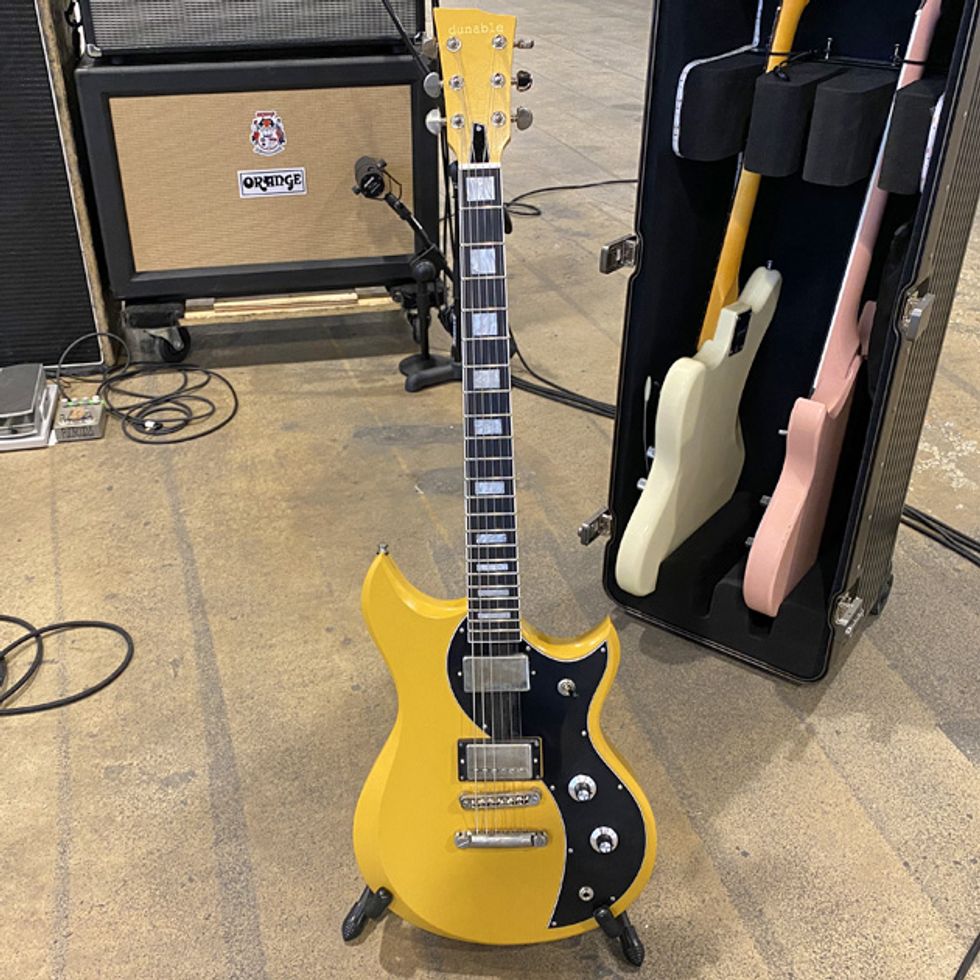
Here’s Hurt’s main squeeze—a TV yellow Dunable Cyclops that is constructed with a mahogany body, maple neck, and ebony fretboard. The custom pickup configuration features a Dunable Grizzly (bridge) and an under-wound Banana Slug (neck). Both pickups come with coil-splitting options. It’s topped with Grover locking tuners and all the hardware is aged nickel.
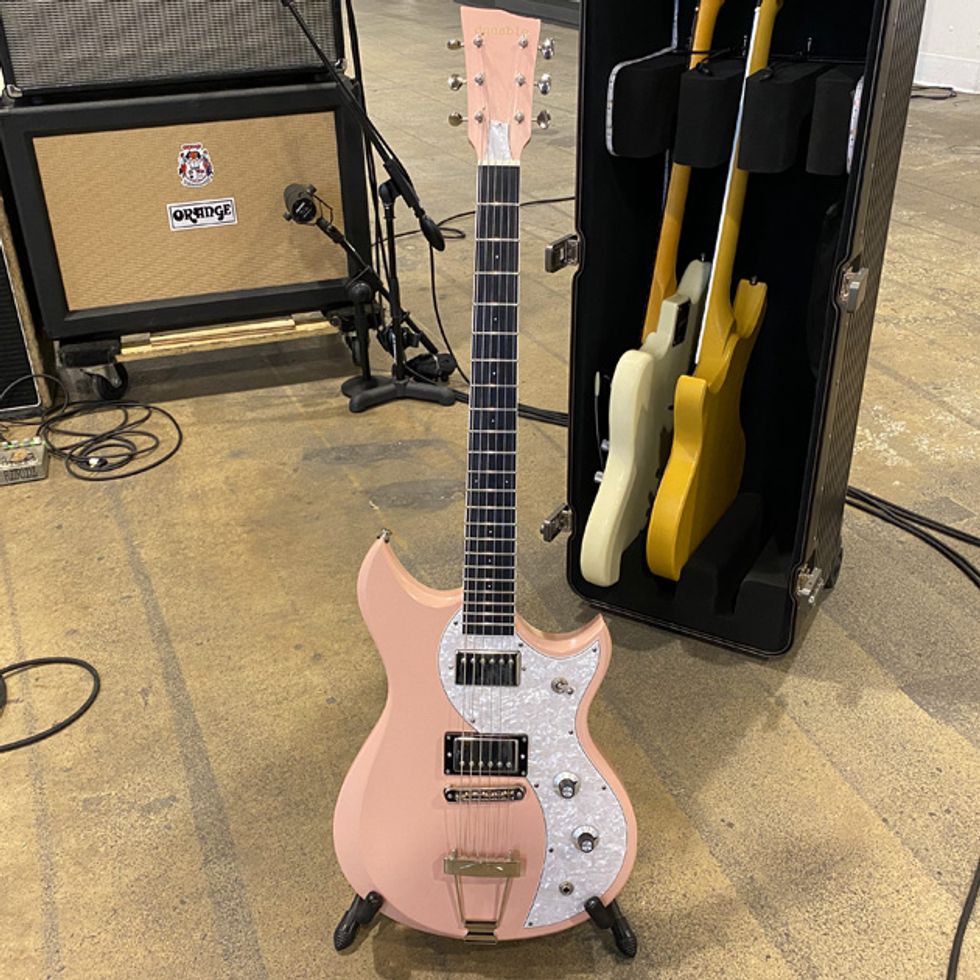
Above is Ross’ second-favorite Dunable—a “pearl” shell pink Cyclops. Like the previous one, this one has a mahogany body, maple neck, and ebony fretboard. However, the pickups are different, with a Lollar Imperial (bridge) and Lollar low-wind Imperial (neck). Both his Dunable 6-strings are typically tuned down a whole step and take GHS Boomers (.012–.052).
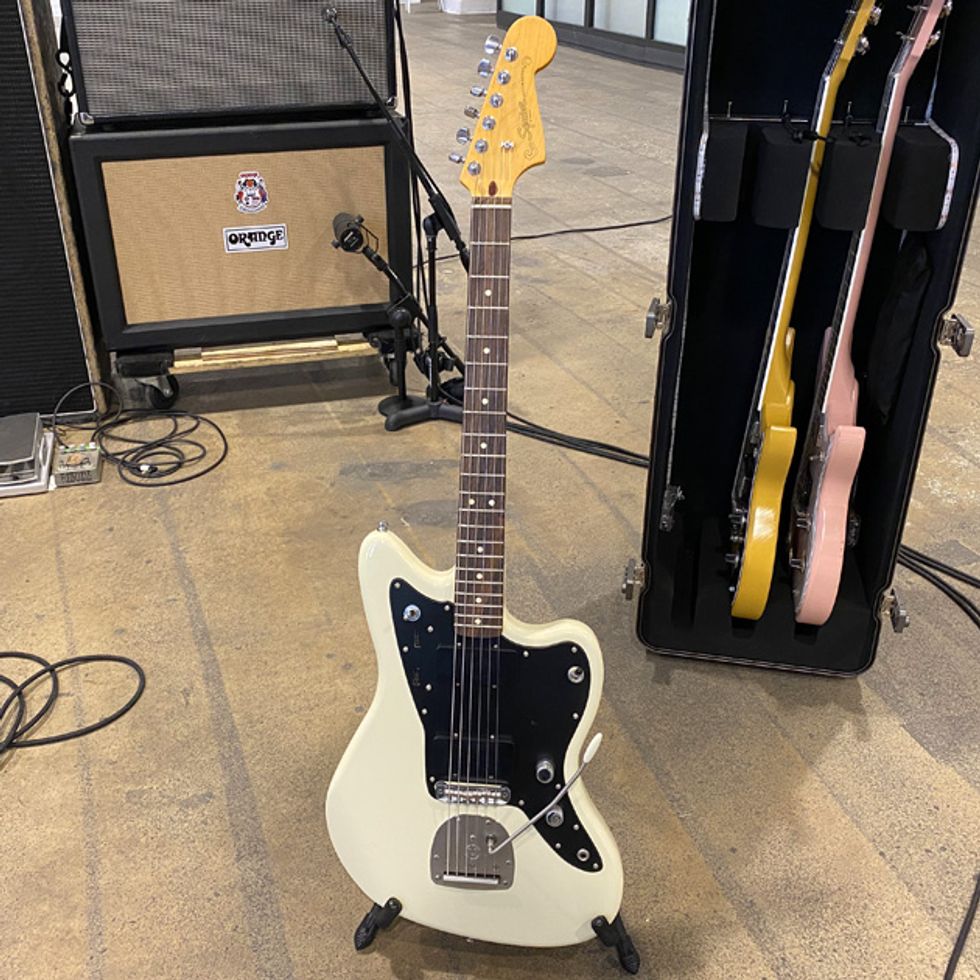
The third axe in Hurt’s guitarsenal is a Squier J Mascis Signature Jazzmaster that has been overhauled with “jazzercised” Dunable Grizzlies (humbucker crammed into the JM-style, single-coil covers), Staytrem Jazzmaster vibrato arm paired with a Mastery vibrato and bridge. For post-rock, drone-note layers, he keeps this one tuned to C–G–C–G–C–G.

The third axe in Hurt’s guitarsenal is a Squier J Mascis Signature Jazzmaster that has been overhauled with “jazzercised” Dunable Grizzlies (humbucker crammed into the JM-style, single-coil covers), Staytrem Jazzmaster vibrato arm paired with a Mastery vibrato and bridge. For post-rock, drone-note layers, he keeps this one tuned to C–G–C–G–C–G.
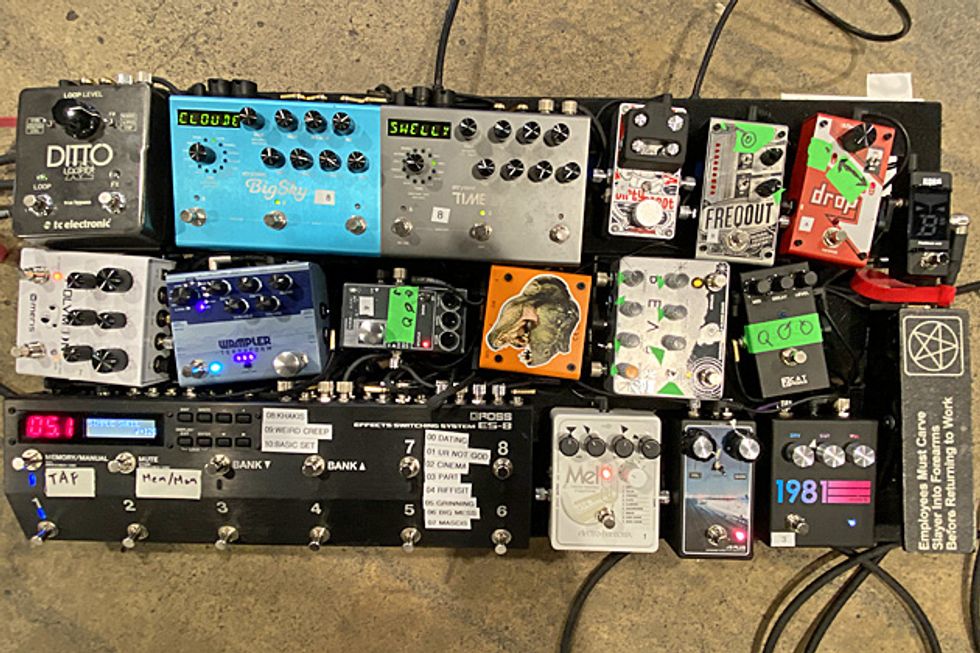
Hurt’s pedal playground has a bit of everything—a little weird, a little wonky, a little wooly, and little whoa!
Below is his signal flow for Burial Waves.
Korg Pitchblack > ZCat Big Reverb TI > DigiTech Drop > DigiTech FreqOut > DigiTech Dirty Robot > Boss ES-8 Effects Switching System controller:
- Loop 1: Electro-Harmonix Mel9
- Loop 2: Antisleep Audio KWB Plus
- Loop 3: 1981 Inventions DRV
- Loop 4: Last Gasp Art Labs Gomorrah subharmonic fuzz
- Loop 5: Lehle P-Split (to send/return to dry amp)
- Loop 6: OBNE Rêver
- Loop 7: (introduces stereo) Wampler Terraform > Meris Polymoon
- Loop 8: Strymon TimeLine > Strymon BigSky—stereo outs into a TC Electronic Ditto X2 Looper.
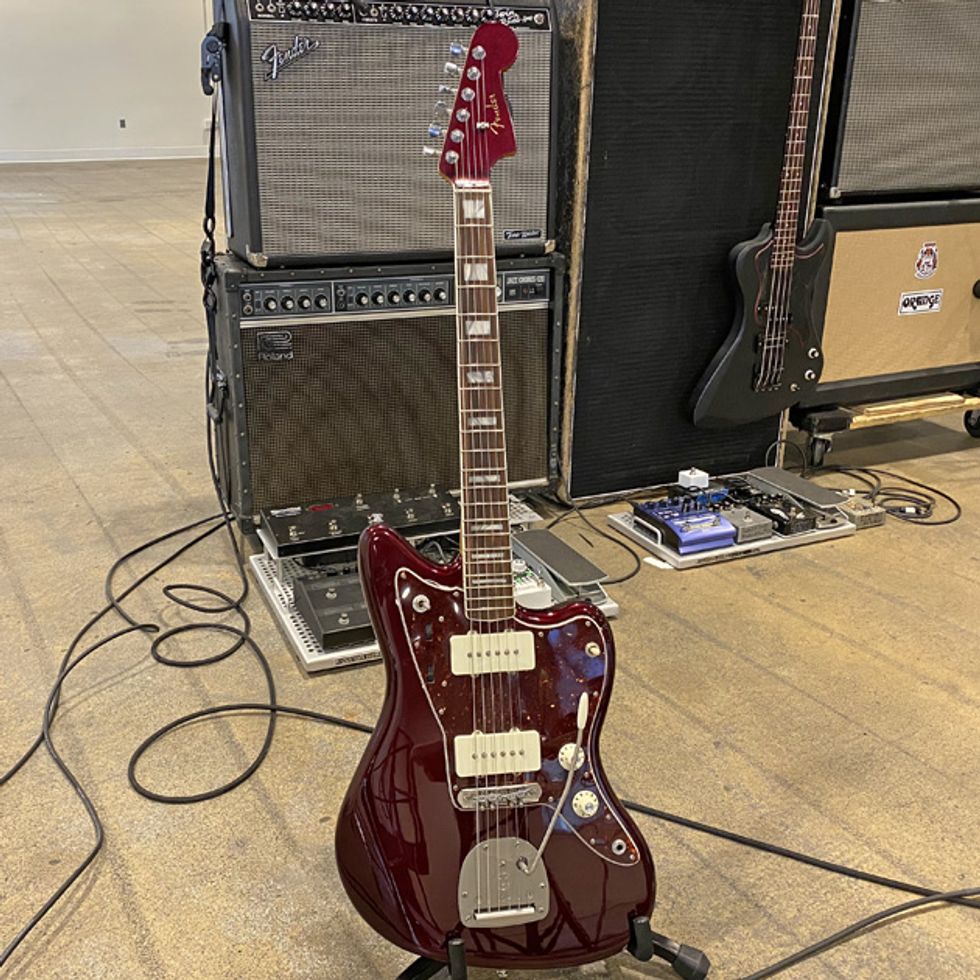
This is Ross Hurt’s (that Matthew Dowling uses in Burial Waves) Fender Troy Van Leeuwen Jazzmaster that’s been modded with Curtis Novak P-90s and a mastery bridge/vibrato. Hurt loves this because of the utilitarian 2-way toggle that goes between the lead and rhythm circuits (something Hurt sees as invaluable for his playing style). The offset takes GHS Boomers (.012–.052).
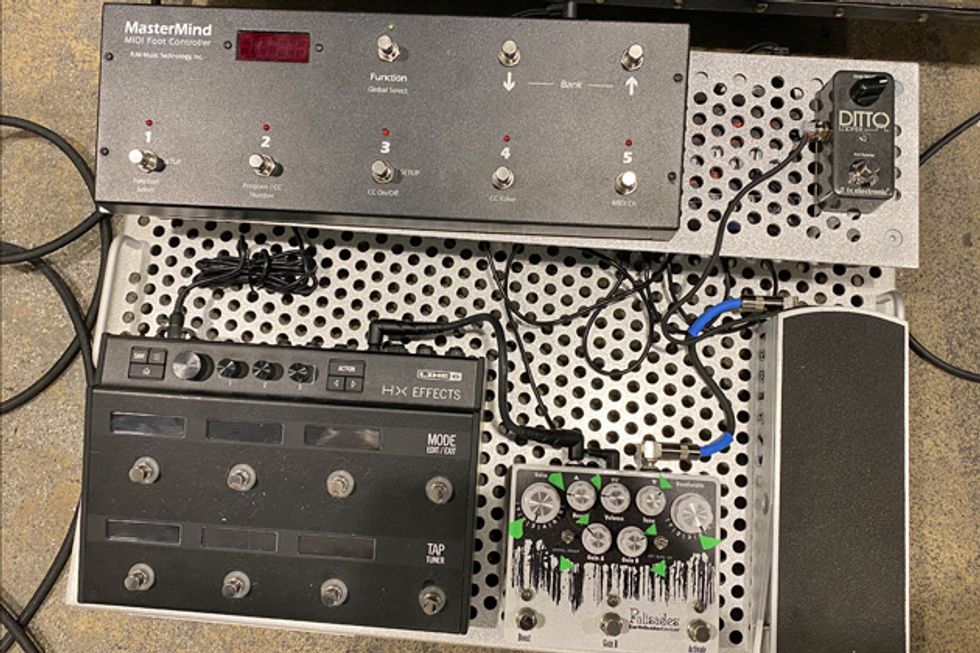
Unlike Hurt, Matthew Dowling goes digital-heavy by simply using an Ernie Ball VPJr Volume Pedal into an EarthQuaker Devices Palisades, and it hits the Line 6 HX Effects unit that does the bulk of tone shaping. The RJM MasterMind MIDI Foot Control handles the moody stage lighting. Everything rests on a board from Custom District Pedalboards.
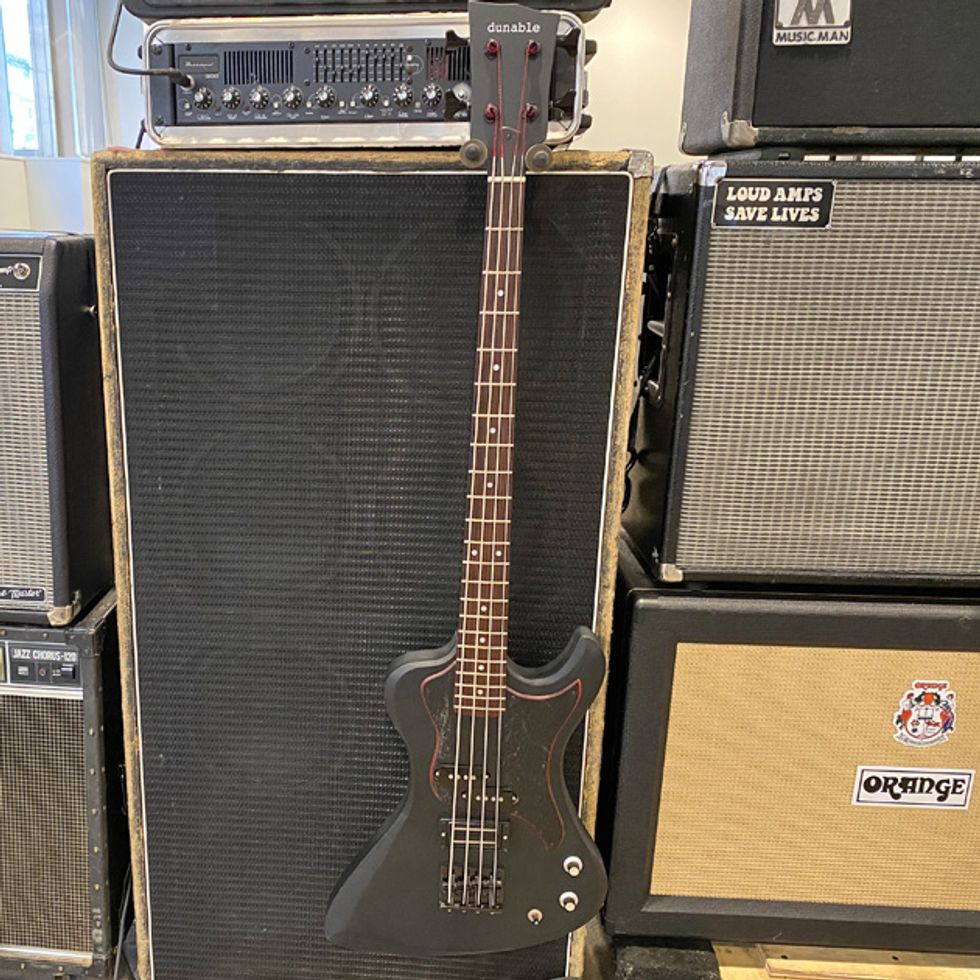
For Burial Waves, bassist Kevin Hilliard borrows Hurt’s Dunable R2 finished in matte black. The swamp-ash 4-string has a 34" scale, a wenge neck, and rosewood fretboard. It has a standard P-bass pickup (neck) and Dunable Bigfoot (bridge). Hilliard rocks GHS Boomers (.045–.105).
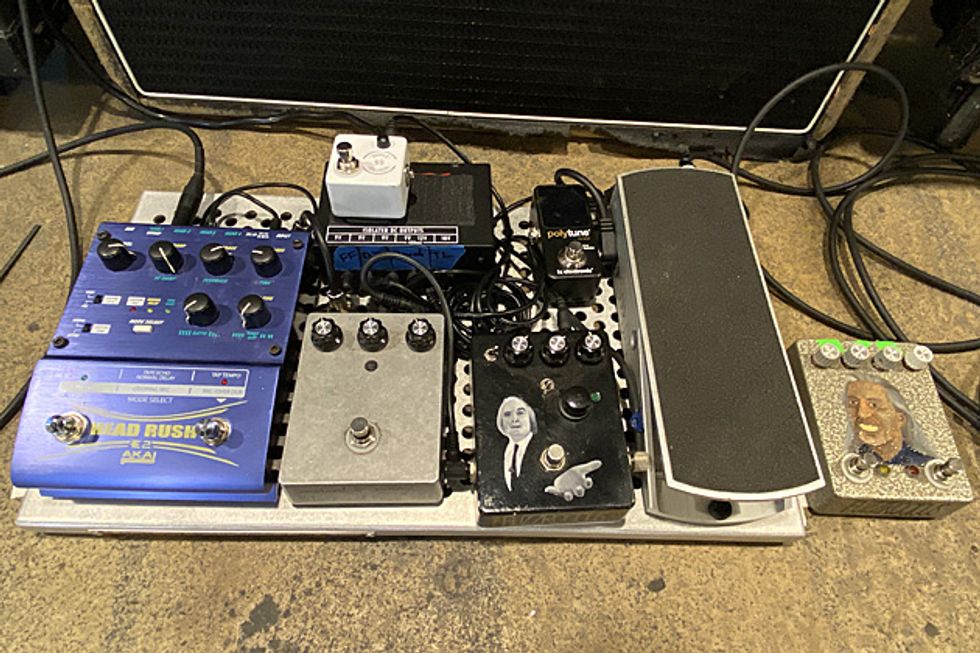
Kevin Hilliard’s bass board flows this way: Ernie Ball VPJr volume pedal > Fuzzrocious "Bob" Demon (with blend knob and gated boost) > custom Fuzzrocious TS-808 circuit built with blend knob (Phantasm art) > Sanford and Sonny Bluebeard Fuzz > Akai Headrush delay/looper > kill switch. Everything rests on a board from Custom District Pedalboards.
Click below to listen wherever you get your podcasts:
 |  |
 |  |
D'Addario Auto Lock Strap: https://ddar.io/AutoLockStrap




![Rig Rundown: AFI [2025]](https://www.premierguitar.com/media-library/youtube.jpg?id=62064741&width=1245&height=700&quality=70&coordinates=0%2C0%2C0%2C0)

















![Devon Eisenbarger [Katy Perry] Rig Rundown](https://www.premierguitar.com/media-library/youtube.jpg?id=61774583&width=1245&height=700&quality=70&coordinates=0%2C0%2C0%2C0)


















































